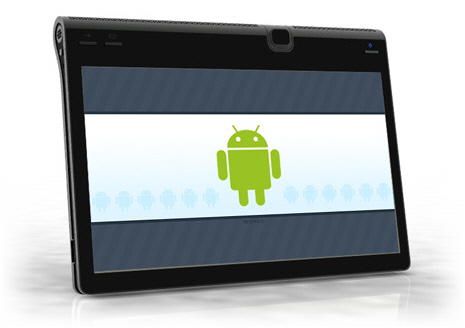How to build the perfect Android tablet, part 5: The price of perfection


- It should have a long-lasting battery, preferably one that can be replaced while the machine is still running.
- It should have a capacitive touch-screen capable of tracking 10 or more fingers at a time.
- It needs to have the Android Market, with the option of running the full suite of Google Android apps including GMail, Maps, and Navigation. And finally,
- Its screen should have a balanced aspect ratio and sufficient resolution for movie watching, web browsing, book reading, and other tablet activities.
A new device can have all these features, however, and still be a flop if it fails to meet the 5th and final criterion for the perfect tablet:
#5: Affordable, even without carrier subsidies
Usually, it's tough to quantify exactly what "affordable" means, but in this instance, Apple has made it a no-brainer. For Android tablets, "affordable" means "cheaper than the iPad".
The entry level iPad is currently $499 in the US. Therefore the entry level Android pad needs to be $498 or less. An iPad with 3G data capability will set you back $629. So an Android pad with 3G needs to be...
$498
No, that's not a typo. The reason for this number is that it's unlikely that you'll be able to get an Android tablet without 3G that meets the other requirements. Especially the one about the Android Market, for the big G has decreed that thou shalt not get the Market unless thou art a phone. That's why the Samsung Tab comes with 3G whether you need it or not.
Everybody knows that the iPad starts at $499, and no matter how hard you try you won't be able to convince "everybody" that a price of, say, $600 for a 3G tablet is actually cheaper than the iPad. Mathematically, logically, and rationally, it might be cheaper, but math, logic, and rational thought aren't on the top of your average consumer's list of considerations. I don't mean that as an insult to the consumer; it's just human nature. If your tablet's starting price is more than $499, then it's not cheaper than the iPad. It has to be cheaper than the iPad, therefore it has to be under $499.
You may remember right before the iPad was announced, there was a lot of speculation about how much it would cost. Some people thought $999, some thought $799, and a few guessed $699 or $650. Nobody, as far as I recall, guessed $499. It was shocking at the time. The perfect Android tablet needs to be just as shocking by achieving this price without carrier rebates on the very lowest end model.
Is it possible? Sure. In April 2010, iSuppli estimated that parts and manufacturing costs for the entry level iPad totaled $259.60. Throw in a 3G radio and that brings the price up to $284.10. Now consider that several months have passed since that estimate, and Apple's costs are probably a little lower now. There's no reason that an Android tablet should be any more expensive to manufacture than an iPad tablet since they basically need the same parts. Perhaps less, since Android devices typically have less Flash memory than their iOS brethren.
What about carrier subsidies? Well first, let's consider the price of the plan they're going to make you sign up for in order to get those subsidies. If you don't mind AT&T, and you need wide area networking, then you can get a 2GB data plan in the US for $25/month for the iPad. Plus you have to pay $130 extra to get the 3G radio. I'm going to go out on a limb and predict that the Android carriers aren't going to be quite as generous and flexible with their deals as AT&T was with the iPad, because they don't have Steve Jobs to strong-arm them or exclusivity as an incentive. In other words, they're going to gouge us. The least they can do is offer us a little money back in the form of a subsidy, right?
Fortunately, the carriers are probably not going to gouge us as much with a data-only tablet plan as they do with a data+voice plan. But that just means they're not going to give us as much of a subsidy. For voice phones, a subsidy of $400 is typical with a 2 year plan in the US. For tablets, I expect that the carriers will chip in around $200-300, bringing the price of a $498 tablet down to between $198 and $298. Anyone who thinks carriers are going to subsidize a $1000 tablet down to $199 is smoking something (and totally not sharing, dude).
To summarize, the perfect Android tablet needs to be full-featured but it also needs to be inexpensive. Against a well entrenched player, wannabe iPad-killers need to outdo the iPad in both features and price. It might not be fair, but it's true. And if that weren't hard enough, manufacturers would be wise to keep in mind that the iPad is a moving target. Next spring, you can be sure that Apple will be lowering their price and/or adding more features. They're not going to take it easy on you, so get ready for a fight.
See all the articles in the "Perfect Android Tablet" series:
What would you build into *your* perfect Android tablet? Share your thoughts in the comment area below.